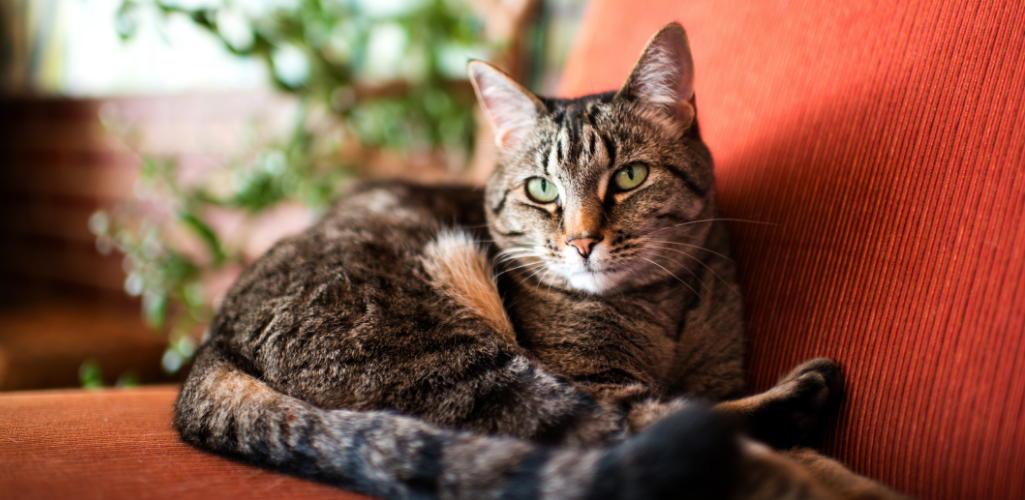

Is my cat going deaf?
If your cat’s going deaf, the signs can be quite subtle and it may take you a while to notice. Cats can be clever at compensating for hearing loss, relying more on their senses of sight and smell to navigate the world.
But before we talk about the signs of deafness in cats, let’s have a closer look at your cats' ears to see what's going on in there.
Cats: hearing and hunting

Cats’ ears are fascinating. They’re finely adapted to the hunting process. Their triangular cone shape helps catch and funnel sounds deep into the ear, amplifying the slightest rustle of a mouse.
Technically, the outer furry triangles of your cats’ ears are called pinnae, and they can move independently of each other. So your cat can swivel one ear in the direction of an interesting noise to discover what it is.
Cats have a greater range of hearing than both humans and dogs, which is another reason why they’re such efficient predators.
Signs to look out for

Deaf cats can live perfectly happy and fulfilled lives, but they will need extra care and support in some areas.
If you’re concerned that your cat might be losing their hearing, here are some of the major signs of deafness to look out for:
- Your cat isn’t startled by loud noises such as the hoover, a smoke alarm or the sound of children running into the house.
- Your cat is startled when you wake them up.
- Your cat doesn’t react when you come into the room and they’re looking the other way.
- Your cat doesn’t respond when you shake a box of their favourite treats.
- Your cat meows very loudly.
What causes deafness in cats?

Some cats are born deaf, and if you’ve looked into this subject at all, you’ll know there’s a lively debate about the relationship between the colour of cats’ eyes and fur and deafness.
Some say that all white cats are deaf. Others say that white cats with blue eyes are more likely to be deaf than white cats with one green eye and one blue eye. It’s all very confusing. In fact, it seems that 22% of white cats are born deaf, and that white cats with two blue eyes have an even higher probability of being born deaf.
Our old friend, old age
For many cats, increasing deafness is simply related to the ageing process.
When your cat’s hearing is working well, sound waves travel into your cat’s middle ear, where they cause vibrations in the eardrum. Little bones called ossicles then transmit those vibrations into the inner ear, where the cochlea sends signals to the brain. The brain interprets these signals as sound for your cat.
Your cat’s eardrum can thicken with age, causing hearing difficulties or deafness for older cats. Hearing problems can also result from infections and illnesses.
How to support your cat
If you think your cat may be going deaf, first take them to the vet for a check-up. Your vet will make sure that your cat doesn’t have an illness or infection that’s causing a problem and might also carry out a BAER test.
This test, which stands for ‘brainstem auditory evoked response’, involves your vet placing three electrodes on your cat’s head to check their brain’s response to sounds. It usually takes about 30 minutes.
How to adapt your home

If your cat does have hearing difficulties, it’s a good idea to adapt your home so they can live more safely and comfortably. Here are a few ideas.
1. Keep your cat safe outdoors
Sadly, it may not be possible for your cat to go outside safely, due to the risk of them not hearing traffic or noticing other potential dangers. However, you could build an outdoor run in your garden with netting overhead. That way, your cat can still enjoy the great outdoors, but without the risk of getting into danger.
2. Provide places that your cat can explore
Indoors or outdoors, give your cat places where they can indulge their love of scratching, climbing and other natural feline behaviours.
3. Engage your cat’s sense of smell
Your cat’s sense of smell is likely to be even more important to them if their hearing is impaired. Give them toys scented with catnip to make playtime even more enjoyable for them.
4. Communicate using hand signals
Many owners of deaf cats successfully use hand signals to communicate with their pet. If you want your cat to come to you, hold out your hand and beckon the cat towards you. If you want to deter your cat from doing something, wave your arms around like a windmill. (This may also encourage humans to leave the room.)
5. Get them a hearing playmate
Your cat will quickly know when it’s dinner time if their feline friend hears the call first. A hearing playmate will also provide extra company for your cat, which can help lower their stress levels.
6. Don’t creep up on your cat
Deaf cats are more easily startled, so make sure that your cat can see you as you approach them.
7. Wake your cat gently
If your cat is asleep on a sofa, for example, gently touch the area around them to wake them. That way, they’ll feel the vibrations and wake up gently rather than with a start.
Is your cat going deaf?
If you’d like to share photographs of your deaf cat or your tips on how to support them, please get in touch with us as usual on our Facebook and Instagram pages.



